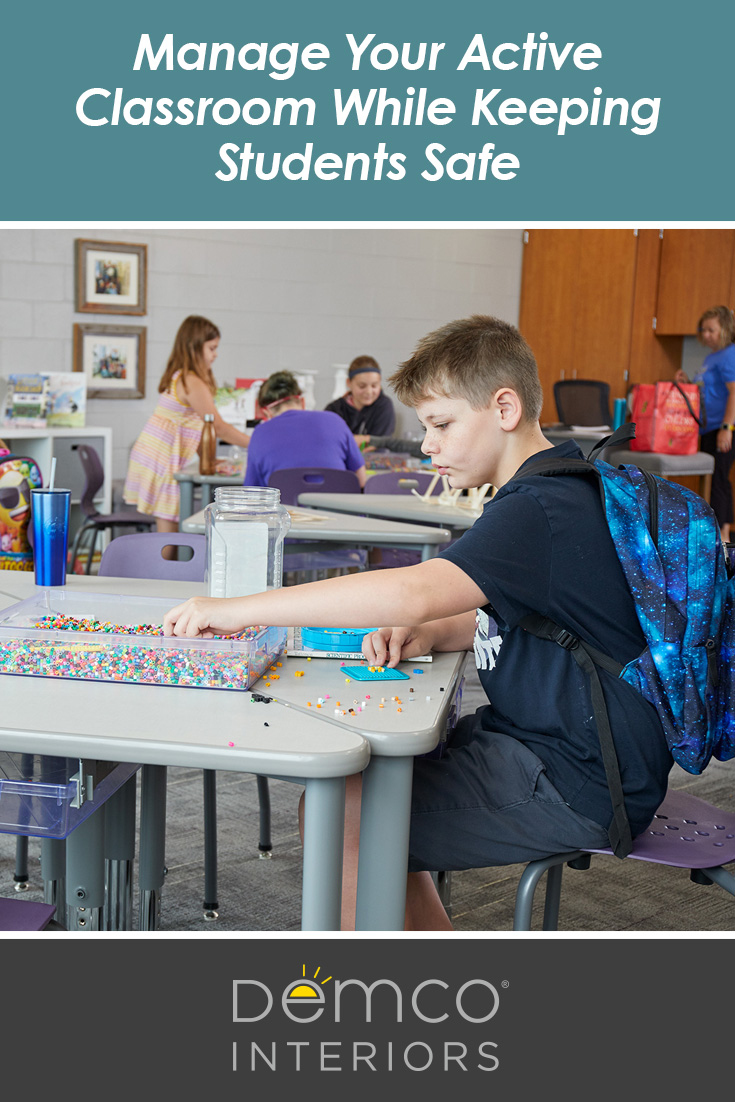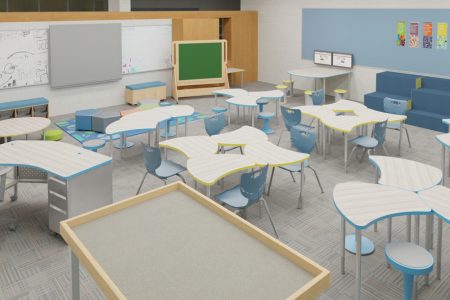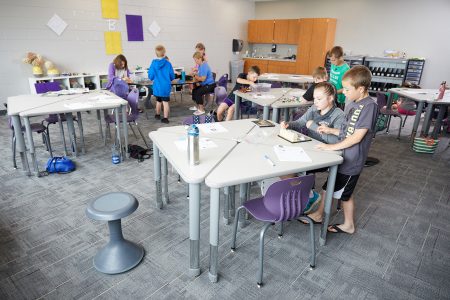 I get asked a lot about how creating more freedom of choice in an active classroom will affect classroom management. Many educators are fearful to let go of some of the control they have over their tightly run ships. And it’s an understandable fear.
I get asked a lot about how creating more freedom of choice in an active classroom will affect classroom management. Many educators are fearful to let go of some of the control they have over their tightly run ships. And it’s an understandable fear.
But what I have found is that the more control you give to students, the less you have to control them. Classroom behaviors often improve as students are given more autonomy and responsibility.
Building this sense of ownership begins with having regular conversations with students about what is working for them as learners. In addition, teachers should always be modeling the best ways to use all of the spaces in the room. These actions, coupled with linking classroom activities with an optimal space configuration, can maximize safety and promote deeper learning.
Below are some of the questions I get asked most often about how to manage an active classroom while keeping kids safe and learning to the best of their abilities.
Will giving students more freedom of choice in where they work make classroom management more difficult?
- In many classes, there is an early dip in behavior as students unlearn their seated, controlled behavior, but this shifts in the first two weeks as students start to make positive choices.
- When instructional practices are in sync with your room arrangement — meaning that they are active, relevant, and allow for creation — positive behavior actually grows.
- Managing your active classroom this way can actually give you more time and proximity with students who exhibit difficult behaviors.
How can I stimulate more positive movement in my active classroom?
- Provide more options for seating and encourage students to work where they are most comfortable (as long as they are not disturbing others).
- Model the movement, and practice, practice, practice with students.
- Praise students who are handling movement well.
- Be clear that you can call a pause on movement if learning is fading.
- Download the Educator’s Guide to Flexible Seating for more tips and tricks.
How might I do a better job with creating and maintaining learning space expectations?
- Unpack your thinking about each of the spaces. Don’t assume students know what to do in each space.
- Consider what microenvironments are in your space and set expectations for each of those spaces. Use signs that name the space, have the expectations in kid-friendly or kid-created language, and include images of what is supposed to happen in that space.
How can I build a space for students to ask questions that’s not distracting to the class?
- Consider using digital spaces for students to participate in conversations in new ways.
- Create writable spaces in the room, such as vertical whiteboards or whiteboard tables, to provide places for students to capture their questions.
- Create a “sticky” wall or a space for Post-it® note questions.
Are our learning spaces safe for evacuation if students are lying down?
- This has never been a concern in classrooms that I’ve worked with, but to help determine the safety of your specific learning area, practice a drill with students working in a flexible seating arrangement and then practice in a traditional class setting. Measure the differences.
- Measure the amount of remaining floor space when students are in their desired spaces for learning. If you can navigate around the room, it should be safe.
Is it ok to use donated furniture or furnishings from discount stores?
- Be cautious about bringing donated or garage sale furniture into your space. First check your school’s fire and safety codes.
- Look for furniture that is specifically designed for educational environments.
- Consider pinch points and durability when purchasing discount furniture.
- To learn more about furniture safety, read Furniture Safety Tips for an Active Learning Environment.
Dr. Robert Dillon
Latest posts by Dr. Robert Dillon (see all)
- How to Manage Your Active Classroom - April 22, 2020
- Answers to Your Questions About Effective Library and Classroom Design - April 2, 2020
- How to Measure the Success of Your New Learning Space Design - March 3, 2020
- How to Get Your Community and Staff Invested in Redesigning Your Learning Spaces - January 13, 2020
- 3 Ingredients of Active Learning Spaces - October 16, 2019




